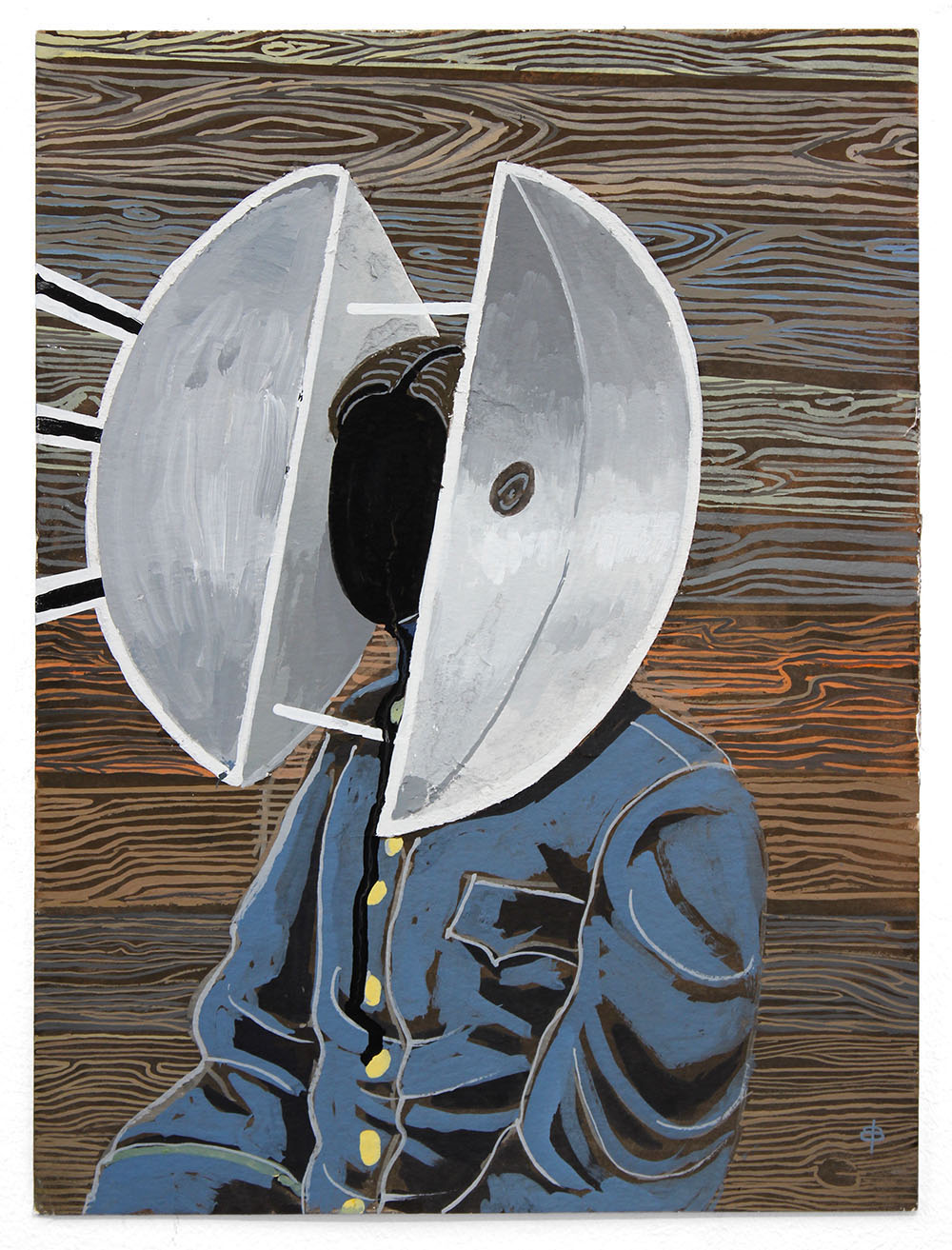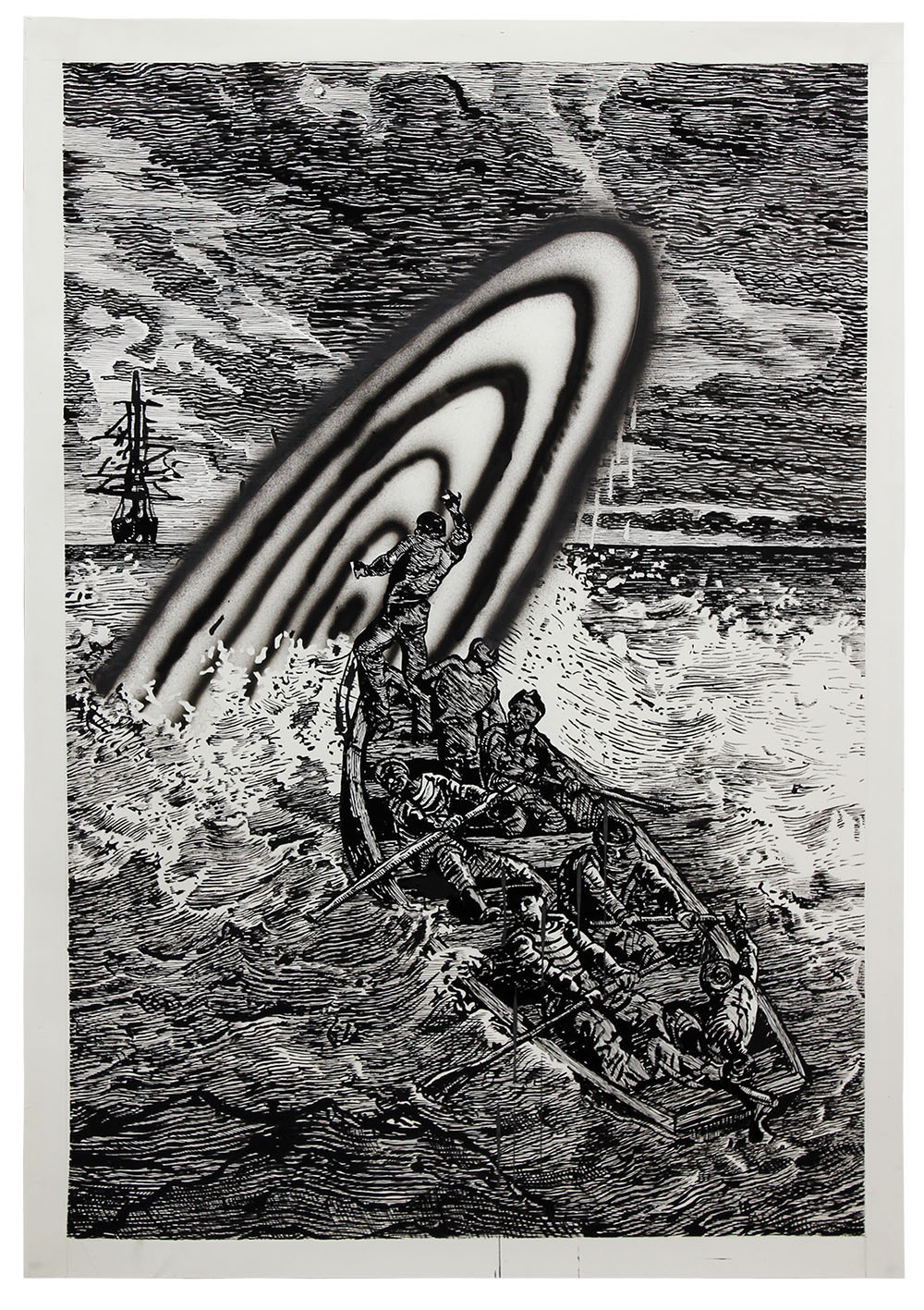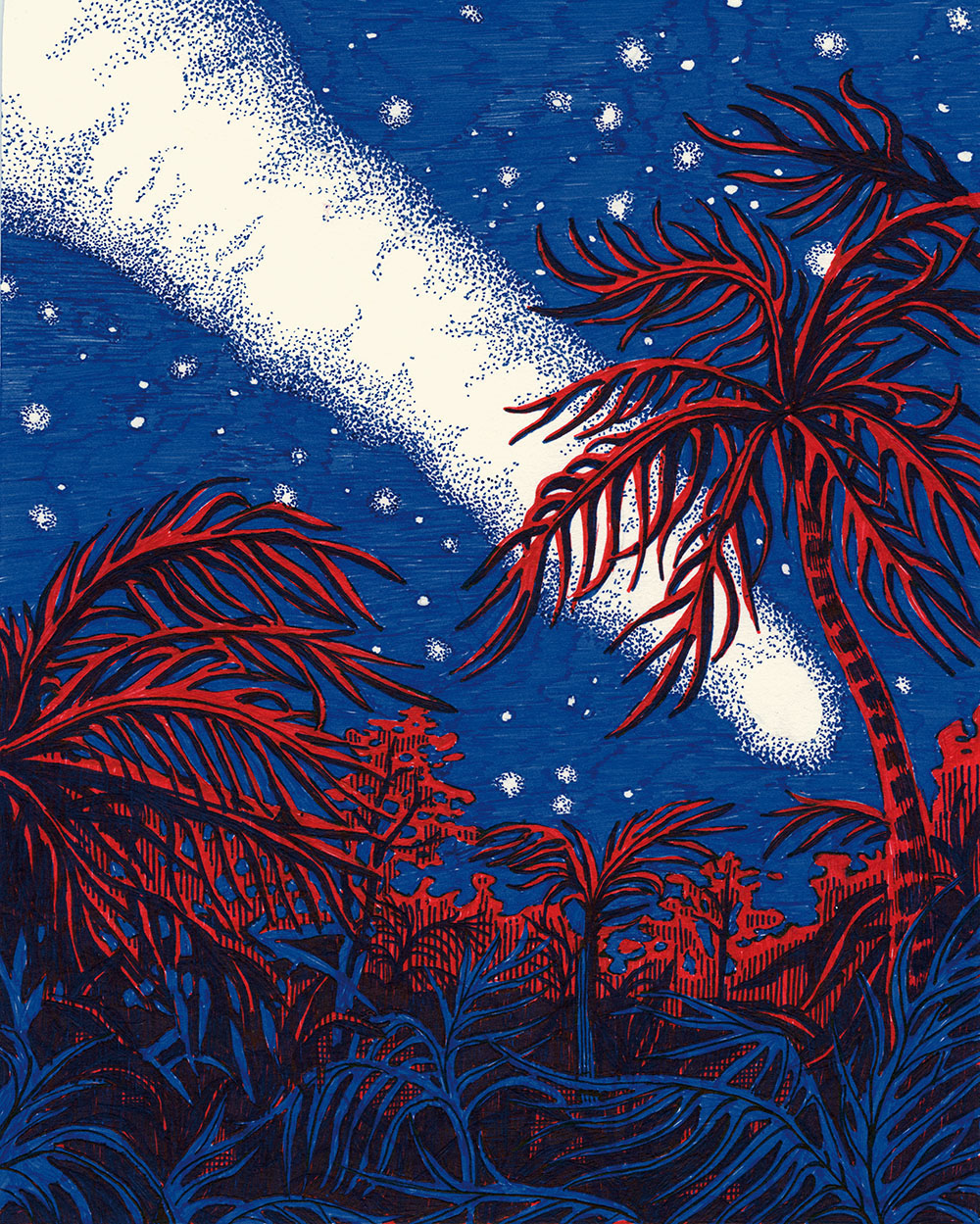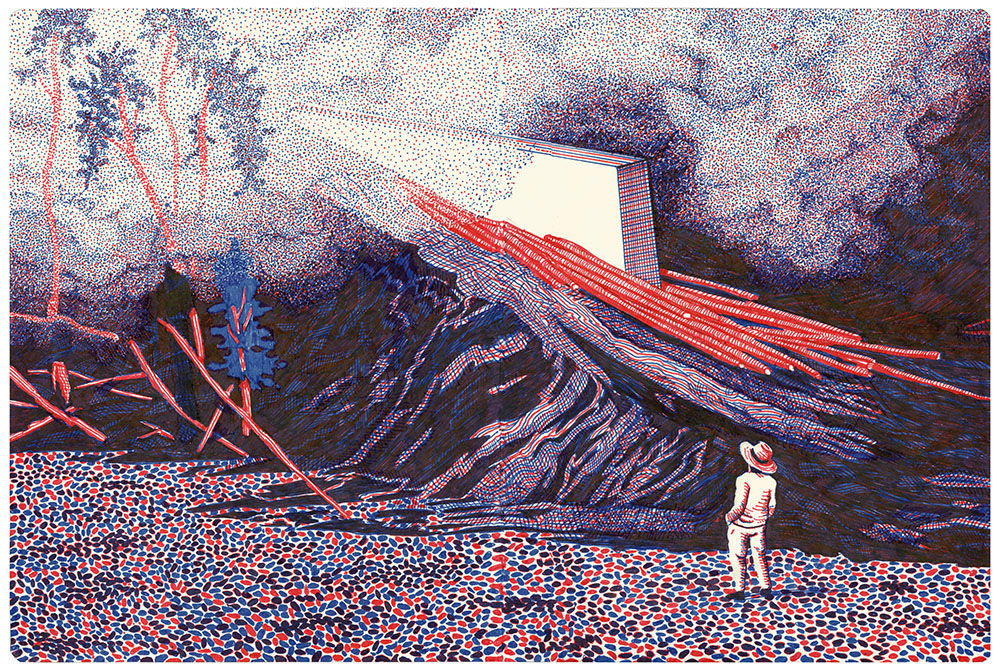
Though only just into his thirties, Edouard Baribeaud has already created an extensive body of work, mastering a myriad of traditional techniques from around the world. Speaking to Emily Steer from his current base in Berlin, Baribeaud discusses Orientalism, his dual French-German heritage and drawing as ‘orchestra’.
Note: this feature originally appeared in Issue 25 of Elephant.
Did you define yourself as an artist or an illustrator first and foremost?
As an artist, I would define myself as a storyteller who draws. From a certain point of view, I consider my work an ‘archipelago’. Each series of paintings, drawings or films is an ‘island’. And each body of work generates its own individual world with its own language. I wanted to create images that are more evocative than illustrative. Basically, my drawings, paintings, installations or films should be a projection surface, a space that allows the spectator’s imagination to come into play.
Do you feel that this background has freed you to experiment with painting in a way that conventionally trained painters might not be so open to: working, for example, with techniques such as egg tempera?
I think that my work holds steadfastly to my roots as a printmaker. It allows me to approach painting with the same image making logic I honed in etching, silkscreen and lithography. It means I start from the lightest element in the image, which is always the inherent colour of the paper or canvas, and get progressively darker. Being accustomed to creating large-scale works in gouache on paper, I turned to the ancient medium of egg tempera for my canvas-based works. This technique gives a flatness to the image surface and leaves the works devoid of oil painting’s weighty materiality. I still haven’t exhausted existing media. I love to express myself through various art forms—from pen and ink to gouache and egg tempera— but drawing underpins all my different works.
Your show The Hour of the Gods has been discussed in relation to Orientalism. Do you feel this appropriation of Eastern aesthetics is still a contentious issue?
Even if we are living in a globalized world, we are still fascinated with—what we call in the West—the Orient. We still have some preconceived images and clichés which pop into our mind when we think about the East. Last winter I travelled to India and I was fascinated by what I saw there. I don’t really know to what extent my mind was filtering the environment to confirm my preconceived images or if I was trying to look at the surrounding world with neutral eyes. Among other themes, I wanted to express this duality in my show The Hour of the Gods. In a way, this exhibition is a contemporary reassessment of Orientalism, the nineteenth century art-historical movement, which saw academies across Europe cast their gaze on the Middle East. I took to the Orientalist tradition to examine to what extent my preconceived notions of the East and India in particular might influence the way in which I would represent elements encountered on my journey.
How does your own dual French-German heritage inform your work as an artist?
My drawings and paintings sometimes have French titles, sometimes German titles, depending on whatever speech melody fits the image best, but this dual heritage is only a starting point for my practice which is constantly evolving, refusing to get stuck in a particular medium or theme. It is perhaps my childlike interest in narrative that propels my work ever onwards, in pursuit of fresh tales and new roads for conveying them.
All images courtesy Galerie Judin, Berlin
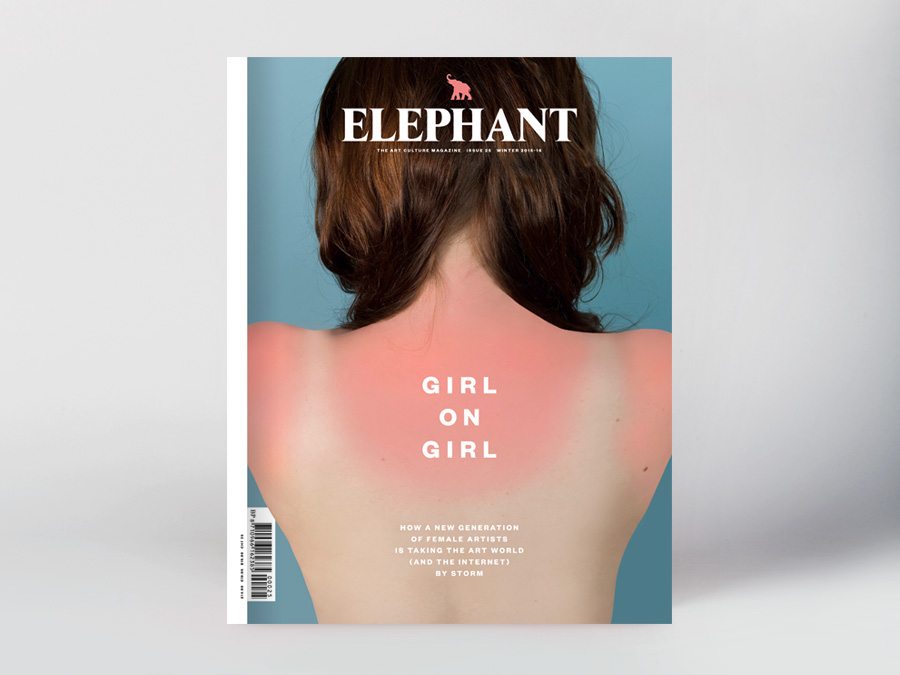
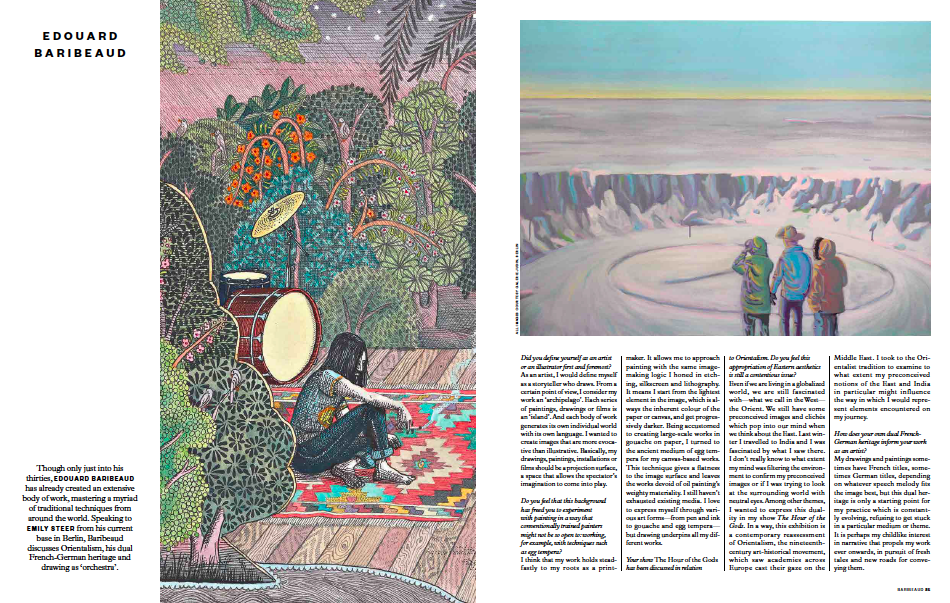


Hétérotopie, 2011. Gouache on paper 102 x 134 cm
